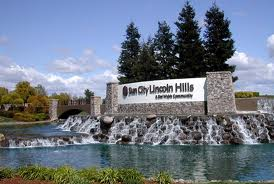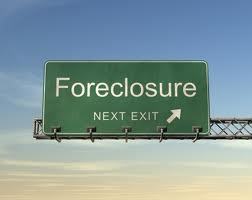Is there a price difference between bank-owned sales, short sales and regular sales in the Sacramento area? Usually there is, but the level of difference really depends on the neighborhood. The following two graphs are taken from pages 10-11 of The Wright Report and they show average sales price by type of sale.


Based on these graphs for the Sacramento area, there is an obvious difference between conventional sales and REO & short sales, don’t you think? Of course we need to consider that there could be condition issues that warrant a price variance too since many bank-owned sales are not in pristine “move-in” shape. But overall the difference is fairly obvious.
 Neighborhood Mini-Case Study: Let’s look at a particular neighborhood to get a closer view of distressed vs traditional sales. The data below represents the “Bridgegate” model in Sun City Lincoln Hills. Less than 30% of all sales in Sun City Lincoln Hills last year were distressed, which is a low percentage for the Sacramento area. However, even with a lower distressed percentage, if appraisers and agents do not consider all the data points, it can be easy to get the value or marketing price wrong.
Neighborhood Mini-Case Study: Let’s look at a particular neighborhood to get a closer view of distressed vs traditional sales. The data below represents the “Bridgegate” model in Sun City Lincoln Hills. Less than 30% of all sales in Sun City Lincoln Hills last year were distressed, which is a low percentage for the Sacramento area. However, even with a lower distressed percentage, if appraisers and agents do not consider all the data points, it can be easy to get the value or marketing price wrong.
- REO sale on 02/28/2011 – $212,000 (cash)
- Traditional sale on 05/13/2011 – $248,000 (conv/20% down)
- Traditional sale on 06/17/2011 – $230,000 (FHA/ 2 days on market)
- Active traditional sale: $239,000
- Pending traditional sale: $359,900 (outlier: massive upgrades w/ a view)
It looks like the bank-owned sale sold at the lowest end of the market because it is not consistent with the rest of the sales or listings. At the same time, the latest traditional sale sold in only two days and that also might not represent the market, right? There was no short sale, but it would not be surprising to have seen a short sale sell anywhere from $220,000-$230,000. There are a whole host of value issues to consider for the properties above, and one of them looks to be the nature of the sale – whether distressed or typical (and even how long the property was marketed). A market may be driven by foreclosures, but if we assume that across the board, we could really get an off-base picture of the market.
It can be very challenging to see any differences between distressed and regular sales in a neighborhood where the market is far more saturated with REOs and short sales (say 95% of all sales were distressed), but ultimately appraisers and agents still need to do their homework and use the right data in a neighborhood to correctly interpret the market because there is usually a difference. Typically in the Sacramento area we see traditional sales on top, then bank-owned sales and then short sales. Agree? Disagree?
Implications for the Difference between REO and Traditional Sales:
 Avoid REOs in appraisal reports: REO sales should be avoided in appraisal reports where possible. However, many areas in Sacramento have a percentage of distressed sales (bank-owned + short sales) near 70%, so it’s not always possible to use only traditional sales. I just appraised a condo recently and 35 of 36 sales over the past year were distressed.
Avoid REOs in appraisal reports: REO sales should be avoided in appraisal reports where possible. However, many areas in Sacramento have a percentage of distressed sales (bank-owned + short sales) near 70%, so it’s not always possible to use only traditional sales. I just appraised a condo recently and 35 of 36 sales over the past year were distressed.- Note the difference: If REO sales are used in an appraisal report and there is a difference noted in the market between distressed and traditional sales, an upward adjustment should be made (or at least less weight given to the distressed sale). The same principle applies to selling a property. A property is not worth less because it is a short sale. It is worth what it is worth, but it may need to be marketed more aggressively to offset any stigma in the market and avoid foreclosure. If the short sale was not a short sale, would it sell for more? That is the critical question to ask and leads us to a better picture of what market value is.
- Marketing Strategy: Sometimes a property does not generate interest as a short sale, but that does not mean it is not worth the listing price or more. Short sales tend to have a stigma among buyers, so they often need to be priced more aggressively to generate interest. Moreover, it is very common to see short sales generate very little interest at a certain price, but the same property will sell quickly as an REO at that same price. The listing agent and/or home owner need to understand the market in order to set the right price for the property, whether a short sale, REO or traditional sale.
- Quick Value vs. Market Value (tax appeals / FSBO): Avoid using only distressed sales when appealing your property taxes or listing your home as a FSBO. These sales may not represent the market. If they don’t represent the market, then you’re probably focusing on a “quick sale” value instead of “market value”
How have you seen foreclosure sales impact pricing in a neighborhood? What other implications do you see when we misinterpret the market?
If you have any real estate appraisal, consulting, or property tax appeal needs in the Greater Sacramento Region, contact me at 916.595.3735, by email, on our appraiser website or via Facebook.
I agree that there can be variances for a reason. For example, I am working on a transaction right now, where my buyers are purchasing a conventional sale. The sellers are likely contributing a couple of thousand dollars by providing needed roof repairs in order to get a two year roof certification. However, that is only a couple of thousand dollars, not tens of thousands so it doesn’t explain the price difference completely. There is also a premium for avoiding the headache of short sales and some REOs. For example, a HUD home we are in contract on right now started spurting water in every direction when we had the water turned on for inspections. The seller, being HUD, won’t pay for any repairs, so it’s up to the buyer to get it fixed if he wants the lender to make a loan on that home. It’s a real hassle.
Thanks, Lisa. How much of a price difference is there between the regular transaction and REO? Not much in this case? Prices are so wild at times. Condition certainly seems to be a driving factor for lower prices – whether REO or traditional. The “take it just as it is” factor from the banks doesn’t help some REOs sell at higher levels either. It seems that Fannie Mae has been updating much more of their inventory lately to get it ready to sell (for homepath at least). I would be curious to hear if others have seen that too.
Ryan,
In my experience eyeballs first and foremost land on Active properties both Traditional and REO. Buyers make a determination between price and condition with REO’s having the advantage of price and Traditional the advantage of condition. (of course all generalities) I was surprised to hear you say that you try to avoid REO’s in appraisal reports. I applaud that thinking but have had many a situation where REO’s are factored and bring down the value.
Shorts live in neverland where time and space are suspended. The motivations of buyers and the willingness of lenders to agree to release make the final price suspect in my experience.
Well said on the generalities you listed, Michael. You said, “I applaud that thinking but have had many a situation where REO’s are factored and bring down the value.” Unless I am misunderstanding what you mean, that’s why it’s preferrable to avoid REOs – because they often do sell for less due to selling quickly and/or selling in inferior condition. I actually do use them all the time in appraisal reports because there is nothing else available (or maybe few traditional sales and a plethora of REOs). I prefer to not use them where possible because the traditional sales in a neighborhood do tend to sell at higher levels and often more adequately represent market value. It seems that many REOs are dumped on the market and could sell for more if they were actually adequately exposed for a reasonable period of time (some are just in awful condition though and so they will only fetch an all cash offer and pricing will be low no matter).
One more thing, Michael. The reason why REOs ought to be avoided in appraisal reports is because the definition of value in a Fannie Mae report is asking appraisers to analyze the most probable price a property should bring without duress. The REOs often do not fit in that category unless the market is saturated to the point where the REO market is the market.
I’ve got 2 appraisals on the same property. The first performed 9 months ago comparing a REO/Auctioned home I purchased for $153K (the house held a $280K note in 12/07 and “sold” to the bank with a deed-in-lieu of foreclosure special warranty deed in 10/09) against strictly REO/Foreclosed properties to come up with a value (location, location, location be dayumed!) of $168K (permitting the lender to charge unwarranted PMI). The second performed just days ago wherein the comparisons were made using traditional sales of similarly situated property (to all extents possible) appraising at $219K in a market that has lost approximately $20K in 9 months (with the only improvement being the $5,500 fence I had constructed for the pups and very minor board replacements/repairs to the deck). Talk about a perfect example of difference in value when you are comparing apples and oranges v. apples against apples. Wish you were around for the first appraisal – there wouldn’t have been a 2nd and the house would have appraised at $240K.
Thanks TRo for the comment. The auction homes tend to sell really low. I hear agents talk about Freddie Mac really dumping their properties too. I tend to watch closely to see if there is any distinction between Freddie & Fannie. That’s a pretty big difference you noted. Was the first appraisal actually a full inspection and everything? $168 to $219 is quite the gap… Yikes. Sorry to hear about that situation.